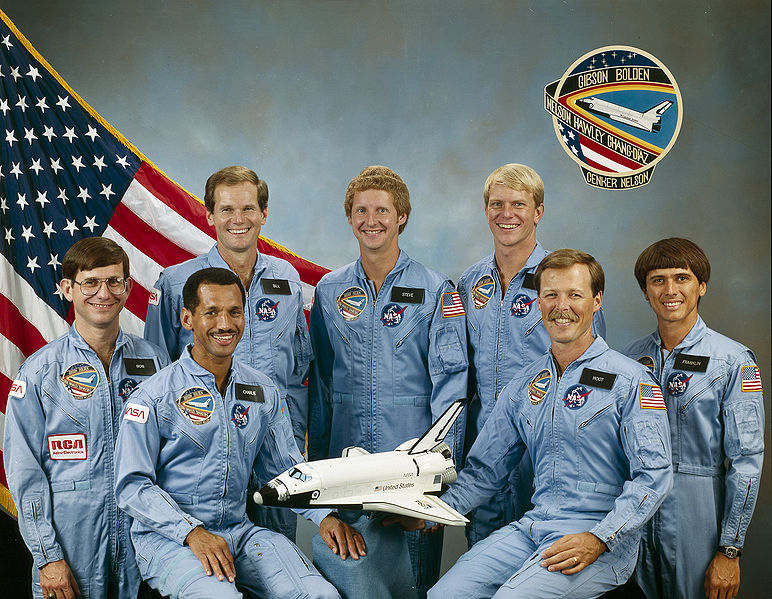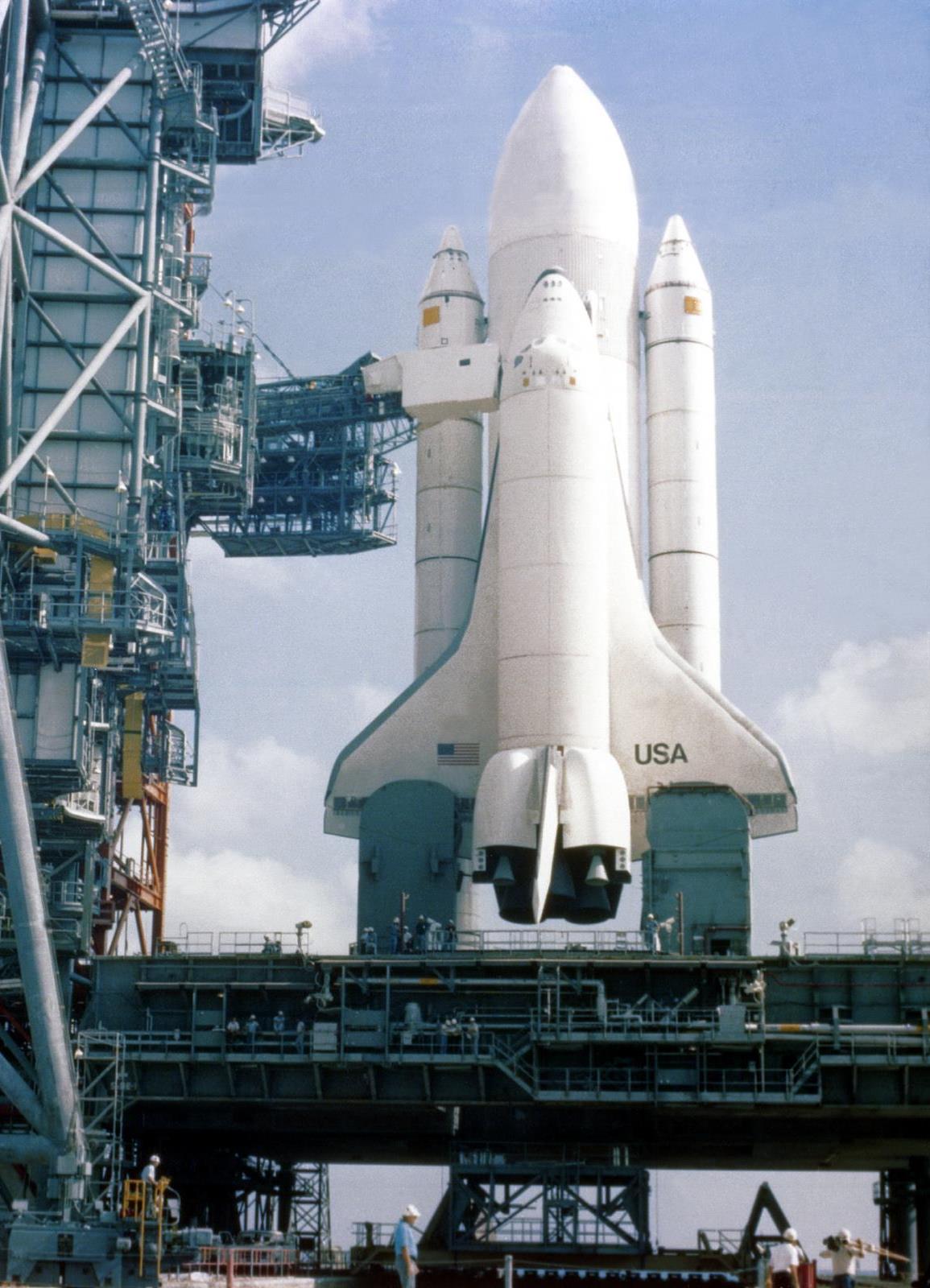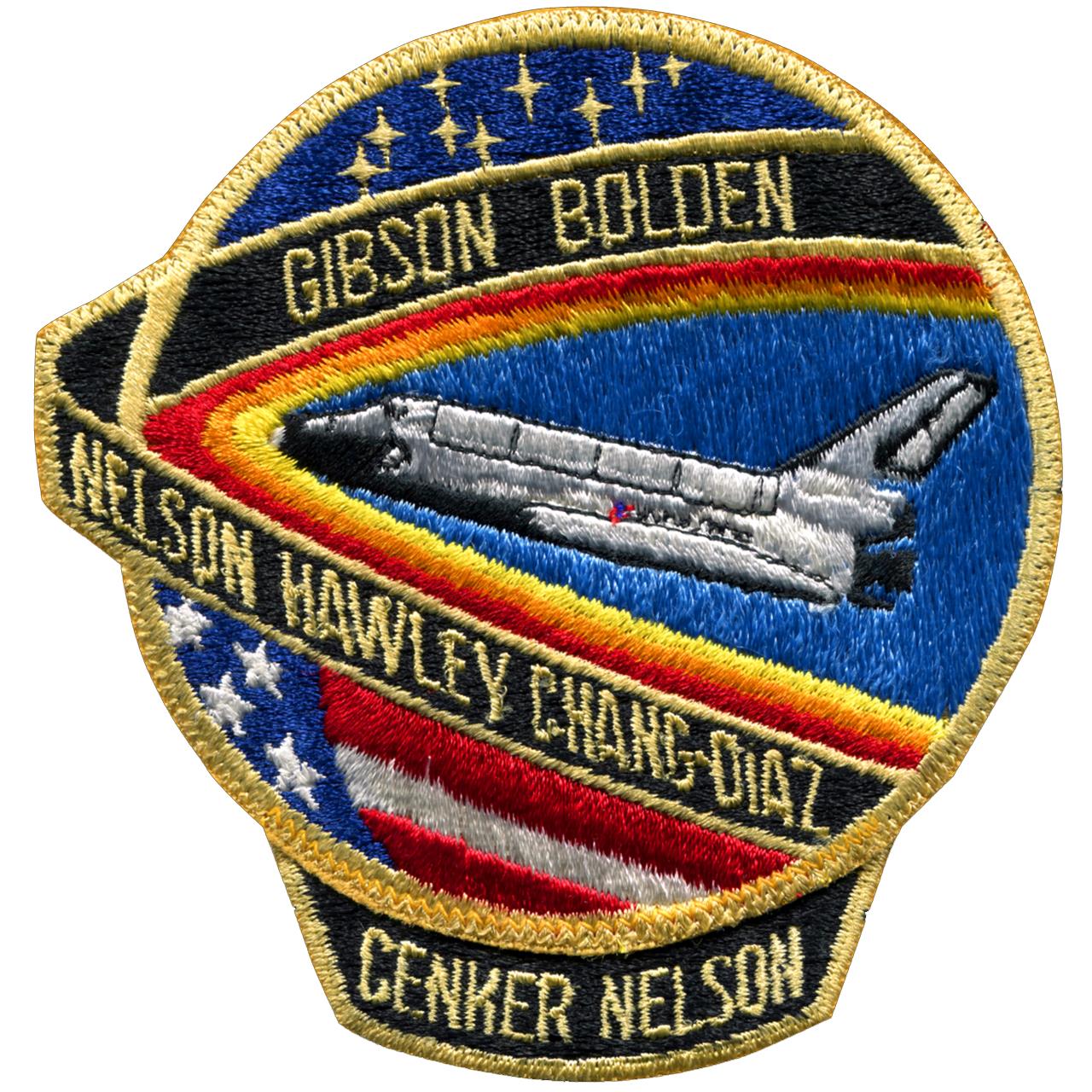Robert L. Gibson
(Second Space Flight)
Charles F. Bolden
(Second Space Flight) Mission Specialist 1:
Franklin R. Chang-Diaz
(Second Space Flight) Mission Specialist 2:
Steven A. Hawley
(First Space Flight) Mission Specialist 3:
George D. Nelson
(Second Space Flight) Payload Specialist 2:
Robert J. Cenker
Clarence W. "Bill" Nelson
(Only Space Flight) Payload Specialist 1
STS-61-C was the twenty-fourth mission of NASAs Space Shuttle Programme, and the seventh mission of Space Shuttle Columbia. It was the first time that Columbia, the first operational orbiter to be constructed, had flown since STS-9. The mission launched from Florida's Kennedy Space Centreon 12 January 1986, and landed six days later on 18 January. STS-61-C's seven-person crew included the second African-Americanshuttle pilot, future ASA Administrator Charles Bolden, the first Costa Riconm-born astronaut, Franklin Chang-Diaz, and the second sitting politician to fly in space, Representative Bill Nelson (D-FL). It was the last shuttle mission before the Space Shuttle Challenger disaster which occurred just ten days after STS-61-C's landing.
A free template by Lucknowwebs.com for WYSIWYG WebBuilder 8
Study
Research
Main Index
Space Cosmology
Science Research
*
About
Science Research
Science Theories
Desk
Site Map
BookShelf
Copyright © by Nigel G Wilcox · All Rights reserved · E-Mail: ngwilcox100@gmail.com
Designed by Nigel G Wilcox
Powered By AM3L1A
Pages within this section: USA Shuttle Mission Flights
STS-61c
Pages within this section:
The Space Shuttle Missions
Astronauts:
STS-61c
Command Pilot:
Pilot:
60
M
8
SM
Sub-Menu
menu
-
61
61a
61b
61c
61e
61h
61m
(First Space Flight)
Backup Crew
Payload Specialist 2
Gerard E. Magilton
The primary objective of the mission was to deploy the Satcom K1 communications satellite, second in a planned series of geosynchronous satellites owned and operated by RCA Americom; the deployment was successful. Columbia also carried a large number of small scientific experiments, including 13 Getaway Special (GAS) canisters devoted to investigations involving the effect of microgravity on materials processing, seed germination, chemical reactions, egg hatching, astronomy, atmospheric physics, and an experiment designed by Ellery Kurtz and Howard Wishnow of Vertical Horizons to determine the effects of the space environment on fine arts materials and original oil paintings, flying four of Kurtz's paintings into space. It also carried the Materials Science Laboratory-2 structure for experiments involving liquid bubble suspension by sound waves, melting and resolidification of metallic samples and container-less melting and solidification of electrically conductive specimens. Another small experiment carrier located in the payload bay was the Hitchiker G-1 (HHG-1), which carried three experiments to study film particles in the orbiter environment, test a new heat transfer system and determine the effects of contamination and atomic oxygen on ultraviolet optics materials, respectively. There were also four in-cabin experiments, three of them part of the Shuttle Student Involvement Program. The shuttle carried an experiment called the Comet Halley Active Monitoring Program (CHAMP), consisting of a 35 mm camera intended to photograph Halley's Comet through the aft flight deck overhead window. This experiment proved unsuccessful because of battery problems.
STS-61-C Landing
According to Bolden, in addition to deploying the RCA satellite, Cenker operated a classified experiment for the United States Air Force during the mission. Bolden was only told that it was a prototype for an infrared imaging camera.
STS-61-C was originally scheduled to last seven days, but NASA decided to end it after four because its delays had delayed the next flight, STS-51-L.[4] It was rescheduled to land on 17 January, but this was brought forward by one day. However, the landing attempt on 16 January was cancelled because of unfavorable weather at Edwards Air Force Base. Continued bad weather forced another wave-off the following day. The flight was extended one more day to provide for a landing opportunity at Kennedy Space Center on 18 January – this was in order to avoid time lost in an Edwards AFB landing and turnaround. However, bad weather at the KSC landing site resulted in yet another wave-off.
Columbia finally landed at Edwards AFB on its fifth landing attempt at 5:59 am PST, on 18 January. The mission lasted a total of 6 days, 2 hours, 3 minutes, and 51 seconds. STS-61-C was the last successful Space Shuttle flight before the Challenger disaster, which occurred on 28 January 1986, only 10 days after Columbia's return. Accordingly, commander Gibson later called the STS-61-C mission "The End of Innocence" for the Shuttle Program.
Nelson, the Florida congressman, had hoped to receive a Florida orange after landing in the state. The personnel at Edwards greeted the crew with what Bolden described as "a peck basket of California oranges and grapefruits".
After four unsuccessful launch attempts, Columbia launched successfully from Kennedy Space Center at 6:55 am EST on 12 January 1986. There were no significant anomalies reported during the launch.
The primary objective of the mission was to deploy the Satcom K1 communications satellite, second in a planned series of geosynchronous satellites owned and operated by RCA Americom; the deployment was successful.














